Dana Howell and Don Garno - Podcast Transcription
September 13, 2023 at 1:00 p.m.Editor's note: The following is the transcript of a live interview with Don Garno from Duro-Last and Dana Howell from Damschroder. You can read the interview below or listen to the podcast.
Megan Ellsworth: Have you ever had a question about your roof and didn't know who to turn to for answers? Are you interested in learning more about one of the most important aspects of your home? Not to fret. The Ask A Roofer podcast is here for all you home and building owners. Join us as we talk with industry experts, roofing contractors, business owners, and more about all things roofing. And remember, ask a roofer.
Hello everyone. My name is Megan Ellsworth here at rooferscoffeeshop.com. Back again for Stories from The Roof podcast. And this week I'm with Don Garno and Dana Howell. Hi gentlemen, how are you?
Don Garno: Hey, good morning, Megan. How are you?
Dana Howell: Good, thank you.
Megan Ellsworth: Why don't we just go ahead and have you both introduce yourselves, give a little background on who you work for, what you do. Yeah.
Dana Howell: Sure. My name's Dana Howell. I am the owner and president of Damschroder Roofing. I've been roofing since the late 80s.
Megan Ellsworth: Amazing. And you're based out of Ohio, you said?
Dana Howell: Yeah, a little town called Fremont, Ohio. We're southeast of Toledo, about 40 minutes.
Megan Ellsworth: Awesome. Great. Don, who are you?
Don Garno: So, I'm Don Garno. I worked for Duro-Last Roofing here in Saginaw, Michigan. Been with Duro-Last for a little over 27 years. Started back in 96' with them. Had many different job titles and hats over the years. Worked in quality assurance for several years as a inspector, a field rep, a regional manager for several years, and now I'm a product manager for the custom fab part of our business.
Megan Ellsworth: Okay, very cool. So how did you both fall into roofing?
Dana Howell: Well, I really had no direction in life to be honest with you. I had just graduated from high school in 86' and my mom, I lost my mom to cancer the same year, kind of went through a rebellion phase of my life and just didn't have any direction. So I knew I wanted to work somewhere and earn money. So I heard of a job opportunity and I was fortunate enough to have a guy named Dave Damschroder invest in me and raise me through a business and teach me the ways to go through life in a proper way and become a man of integrity. And so here I am now, the owner of Damschroder Roofing. It's actually a neat story, but that's my side. It didn't start out real pretty.
Don Garno: Mine's not nearly as colorful as Dana. As I was, I had just finished up my first year of college and was looking for a different summer job then. I had been cutting meat. When I was in high school I worked for a little market down the road from where I lived and was just looking to something to make a little more money, work a few more hours. Saw a posting in the newspaper of all things and applied for a temporary position. It turned into a full-time and actually a pretty good career for myself.
Megan Ellsworth: Yeah, wow, that worked out.
Don Garno: Yeah, for sure.
Megan Ellsworth: So Dana, you kind of mentioned the original creator of Damschroder Roofing was maybe a mentor for you. Don, who taught you about roofing? Who was a mentor?
Don Garno: Different coworkers over the years. Mitch Getler, he's a director of quality assurance at Duro-Last now. Back when I was early in my career, he taught the in-house training classes and he trained me on how to heat weld and how to install the Duro-Last membrane. So that was kind of the intro to it. And then obviously, on the job experience really. I learned from a few years out on the roofs, it was one of those things you weren't going to learn it in a classroom in a few days. You definitely took time to learn all the different details and the way things are supposed to be done and things that didn't work that we had to repair, obviously. You know to look for those types of things when you're doing inspections later in my career. So I was able to take some of that knowledge that I learned on things that weren't done properly and how to apply that onto new installations and to teach our contractors how to perform a better installation as well.
Megan Ellsworth: Wow, that's great. A good mentor really just takes you places. Dana, do you want to kind of give us a little bit more insight on who taught you about roofing?
Dana Howell: Well, it was Dave Damschroder. Like I said before, when we first started, we were really small. There was only four of us roofing and he was trying to build a business so he would roof with us during the day and then sell at night and also raise four kids and try to have a family life as well. So, it was interesting at the beginning building the business and we just did what we could to make ends meet as far as getting jobs. And the business slowly started to build and get bigger, and we went from four to six and six to eight, and it just slowly grew.
So, it got to the point where he could no longer do everything. And so he had to do some promoting and I was eating lunch with him one day in the van on a roof on a job, and I said, "If I ever had a business like this, I would run it exactly how you run your business." And later he told me that that was the deciding factor of him looking to get away and just to promote me and continue to groom me to take over the business. So, that's what happened.
Megan Ellsworth: Wow, that's great. I feel like it's so life-changing when you have someone that you really look up to believe in you and say, yeah, you can do it. So, that's great that you had that.
Dana Howell: Absolutely.
Megan Ellsworth: Yeah, exactly. So give us a little bit of an overview of the Anderson's Arch Project that you worked on together.
Dana Howell: Yeah, so it was definitely not your typical flat roof by any means. This was a very steep sloped roof on a building that they store about 60,000 tons of fertilizer inside of it. So that is kind of the reason it's shaped like it is so that they can get as much in there as they can. The challenge was obviously the slope, and we basically had to lay out a roof that... They were having issues with their, it was shingled before, and every time they'd get a windstorm, they'd lose shingles. So that wasn't working. That was the reason that they called us to see about putting a single ply membrane on there.
So, we knew we could solve their issue with the membrane. We've done it before on other salt domes all over Ohio. It's still a challenge, right? Because I think it's like 40,000 square foot, the building, and we've got great employees that are very good at repelling basically, and doing the install through repelling, but still at the same time, 40,000 square foot isn't something you do in a day. So you've got to make sure that you keep everybody healthy and still conquer this thing.
And we knew that the prefab membrane from Duro-Last was the right choice because they do a lot of the work in a controlled environment so that when it comes out on the site that we have a quarter of the welds that we would have if we were just rolling out roll goods. So we wanted to utilize the prefab membrane from Duro-Last, but we also had to be able to work with it. We couldn't make it too heavy to where the guys couldn't work with it either. So, that was a challenge.
We also had to use all stainless steel screws and fasteners and edge metal because the fertilizer would eat metal. It will just literally eat through it and rust it. So we had to get creative on that as well. And we love our relationship with Duro-Last because we work well with them as far as their engineering department to help us design an assembly that goes well for the customer.
Megan Ellsworth: Wow, that's wild. I did not know that fertilizer eats through metal.
Dana Howell: Yeah, fertilizer is very, very corrosive. We've actually done work on this particular site and other projects and worked with Duro-Last because of that very issue that the engineering works well with us to design something that will last the life of the warranty if not longer.
Don Garno: Dan, do you think that was part of the reason that some of the shingles were blowing off on the original roof because of the corrosiveness of the fertilizer?
Dana Howell: Yeah. If the engineering isn't done at the beginning and they go in there and say, "Okay, we're just going to put a heavy duty architectural shingle down," and they air nail it down, anything underneath that wood is just being rusted from the fertilizer.
Don Garno: Gotcha.
Megan Ellsworth: Wow, that's wild. And you said that the roof is low slope. Can you paint a picture of the roof for us a little bit more and what it looked like and what was your first reaction when you approached the job, maybe?
Don Garno: I'd say it'd actually be more of a high slope than a low slope because it's more like a, picture like a covered wagon.
Megan Ellsworth: Oh, I see.
Don Garno: Extremely high slope. I mean, some of the areas of the roof that they had to work on were virtually vertical.
Megan Ellsworth: Wow.
Don Garno: Towards the very ends of the building. So yeah, it's very, very high slope. That's when Dana said that the guys had to repel from the roof. I mean, they were [inaudible 00:09:45].
Megan Ellsworth: Oh, okay.
Dana Howell: Yeah, they were fully-
Don Garno: You weren't walking on this roof.
Megan Ellsworth: Wow.
Don Garno: [inaudible 00:09:50].
Megan Ellsworth: Okay cool.
Dana Howell: No, they were fully harnessed the whole time. Literally looked like someone climbing a mountain repelling down, and they did a phenomenal job. I mean, they're very good at what they do, and I don't think I heard one complaint the whole time.
So, we worked it down as far as we could and then had a separate crew come in for the very bottom because the very bottom was virtually straight up and down, so that kept guys fresh and didn't get anybody burnt out on the project. And so that worked well.
The other thing they did is we chose color tan, which it's nice that Duro-Last offers colors so that it wasn't some bright white thing that was going to be stained and dirty the first week. So the tan was aesthetically pleasing to the eye, and it goes well with the stainless steel fascia on the gable ends. That worked out well.
The other thing that's nice is you can have Duro-Last design the fastening tabs any way you want. If we felt like we wanted wind tabs 27 inches at the top where it's going to be most vulnerable to blow off, we can do that. When you get lower, if you want to go to five foot wide, you have the ability to do that. The engineering with Duro-Last will make the sheets, however you draw it up. So that's a true benefit.
Megan Ellsworth: Yeah. Wow, that's a huge benefit. And you were talking about safety and how your guys were repelling down. What other specific measures did you take on the job to ensure the safety of everybody?
Dana Howell: First you have to interview them to make sure that they're willing to do it. It's a special crew. You may have, we run anywhere from 40 guys to 60 guys, depending on how busy we are in the summer at peak time of roofing. So, you've got a crew, but that doesn't mean everyone on that crew is willing to do that type of work.
So, first thing you got to do is have a talk with them and say, "This is what's coming up. It's a great job, but it's not for everyone. We realize that. Are you guys okay with this?" It's like picking a football team. Once you have your guys that are willing to do it, then you make a game plan and say, "Okay, this is not an average low-slope roof. One mistake could be death or a terrible injury. So you guys have got to take this serious, and each day you've got to have steps in place to carry out the procedures and not get lazy." Because when you get lazy or confident, sometimes it can not be good. So you're constantly reminding them through project management that, "Hey, guys, you're doing a great job, but you got to do it every day." And so that's kind of how we did it logistically.
Megan Ellsworth: Don, from the Duro-Last side, what was y'all's approach when Dana came to you with this job?
Don Garno: Well, I think Dana hit a lot of the key points already with the custom fab deck sheets and the ability to add the tabs in where we needed them to enhance the performance of the roof system in the areas that it needed it. With our enhanced fastening pattern, the areas near the edge up near the peak, the engineering team really was instrumental in making sure that we designed the roof in a way that was going to prevent having blow off issues like they were experiencing with the previous shingle roof system.
And like Dana said, with the stainless fasteners to combat the corrosiveness of the fertilizer with the standard steel fasteners, even though our standard fasteners have an e-coating on them, over time they still become susceptible to corrosive, such as that's in that fertilizer and a few other situations as well where we do recommend going with stainless fasteners.
So that was, I'm sure, something that was discussed with the engineering team as well when Dana brought the project to us to ensure that we were coming up with the best solution for this particular project.
Megan Ellsworth: Wow. Yeah. Great. That was my last question about the job. Do you guys have anything else you wanted to add about the Anderson Arch Project?
Dana Howell: Well, we're hoping to do the other side of the building this year. We only did half of it. It's a huge building. It was part of a test run. The one thing I didn't mention was we had to vent the building and Duro-Last engineering department helped us design custom weldable metal, two-way breather vents for the ridge. These vents go the whole length of the building, which allows the building to breathe. And not everyone can do that. Not every manufacturer even offers the engineering to do that. So that's one thing I didn't hit on, but was really a help as well.
We're just hoping to do the other side and complete the project. I think they're very happy with it. They've made it known that it was nice not to have shingles blowing off after every windstorm. So, that was a success. And we were actually used to hearing that through working with Duro-Last over the years. I mean, we've solved a lot of issues like this with clients. It does make you feel good. I'm not going to lie. It's a neat pat on the back when people are ecstatic and they're convinced that there's no way to solve their issues. And then you come along and you do it, and it's a good day.
Megan Ellsworth: Yeah, that is a good day. And as a homeowner or a building owner, you want to be able to put your trust into the products that going on your building and the people applying them. So that's great.
Dana Howell: Right.
Megan Ellsworth: What makes you smile when you think about your job? This is my favorite question.
Dana Howell: Oh, that's easy for me. I love helping people. I get super excited when I can help others, whether it's an employee reaching a goal that they didn't think they were going to reach in life, or someone in the community that was hurting financially that needed some type of help. I mean, we're very blessed here at Damschroders. We've grown a lot the past few years to where it's allowed us to give back. You never want to forget where you came from. If I wouldn't have had someone come alongside me and invest in me at the beginning, I don't know where I would've ended up. So, my goal every morning when I get out of bed is to try to make someone else's day better, help them put a smile on their face, and it just energizes me to be able to do that. It just makes my day to be able to help others. So, that's my answer.
Megan Ellsworth: That was a great answer, Dana. Don, what makes you smile when you think about your job?
Don Garno: So my answer is going to be very similar to Dana's, but more when a contractor approaches me with a difficult, say detail, or in this case with the Anderson's project, a situation where they've got some unique issues to resolve. And being able to come up with a workable solution that more times than not's going to save them time and labor versus what our competitors can offer because they don't offer the custom accessories that we do or the custom options that we have. And more times than not, it's gotten to the point now, after working for Duro-Last for 27 years, I'm not going to say that I don't still see new things, but most of the time now, it seems like when someone approached me with something maybe they haven't seen before, but I've probably seen it a couple times already, so I've got a pretty quick answer for them.
And then they're like, "Oh, wow, that's a great idea. I never would've thought of that." And I'm like, "Yeah, it's like the seventh time I've had to offer that solution." So it makes you look super smart, even though it's probably just something that I might've learned 15 years ago from Mitch Getler or whoever the case might have been, that offered the solution to me the first time and it's just something that I've remembered and been able to use over and over.
But yeah, being able to offer a solution to a customer that's just shaking their head and they're just lost. They're thinking, "I don't know how we're going to make this work." And then you come up with a custom solution for them in a matter of minutes, and they're like, "Oh yeah, that's great. You guys can do that?" Yeah, absolutely. So yeah, that definitely is something that puts a smile on my face on a regular basis.
Megan Ellsworth: Yeah, just helping out your fellow contractors.
Don Garno: Absolutely.
Megan Ellsworth: I loved both your answers. That was great. Okay, so our last question is how long have you been following Roofers Coffee Shop, and what's your favorite thing about Roofers Coffee Shop?
Dana Howell: I learned about Roofers Coffee Shop about three or four years ago. I'd seen something come through an email, and it intrigued me because I felt like, wow, we need more of this in the industry. I think the industry is finally getting out there to where it's becoming more common to network with other companies. But the Roofers Coffee Shop is something that's been long overdue. I think of people that I look up to in the industry and trying to network with them or getting on a call to join a small group or whatever. And it's just about networking. You don't have to reinvent the wheel, but you do sometimes need to talk to people that's already done what you're trying to do. So to me, I knew I wanted involved in it immediately. We tried to reach out to them the second we saw it and get involved. I think it's a great thing.
Megan Ellsworth: That's awesome. Thank you. Well, we're glad to hear that. Don, how about you?
Don Garno: I was, maybe, I want to say maybe five or six years ago. When I first learned of Roofers Coffee Shop, it was actually was an article that I had put together for what we call it, our top of the news. It's a thing that we send out to our contractors, but I think this was the one that I had done on fall and spring roof maintenance and some tips and tricks to help your roof investment to last longer, to prevent some preventable issues, keeping the drains clear and so on and so forth. And just walking and taking a visual observation of the roofs. Our marketing team actually had forwarded me the link to my article so that I read it. And then ever since then, I just kind of check up on different topics. And to me, I like just kind of broadening my knowledge. And like Dana said, we learn best from coworkers or fellow workers in the industry. So some of the different topics that have come up, I've found it very interesting over the years.
Megan Ellsworth: Oh, well, glad to hear that. Yay. And we are glad to publish your articles anytime any day. Well, thank you both so much for your time, and I'm so glad we got this recorded. And is there anything else you'd like to add?
Dana Howell: No. I guess I'm good. Thank you, Megan. I appreciate you. You did a great interview.
Megan Ellsworth: Yeah, thank you. Thank you both. I really appreciate your time and effort. Thanks everyone for listening. This has been Stories From The Roof with rooferscoffeeshop.com. Make sure to subscribe and we'll see you next time.
Thanks for listening to the Ask a Roofer podcast. Feel free to subscribe and leave a review. Go to askaroofer.com to ask a question.
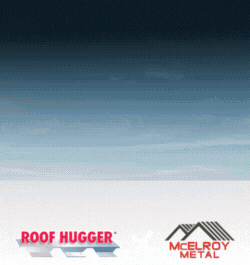

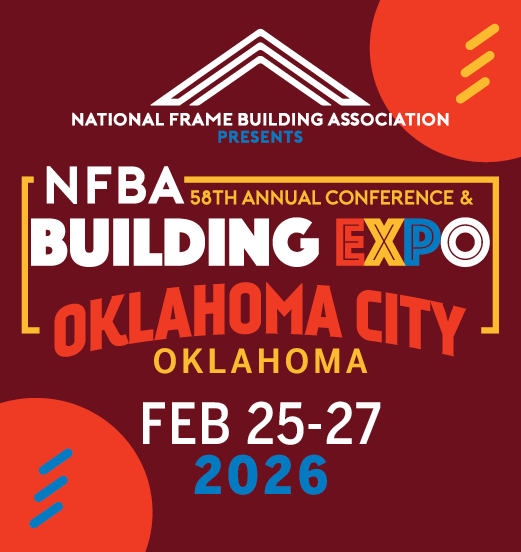






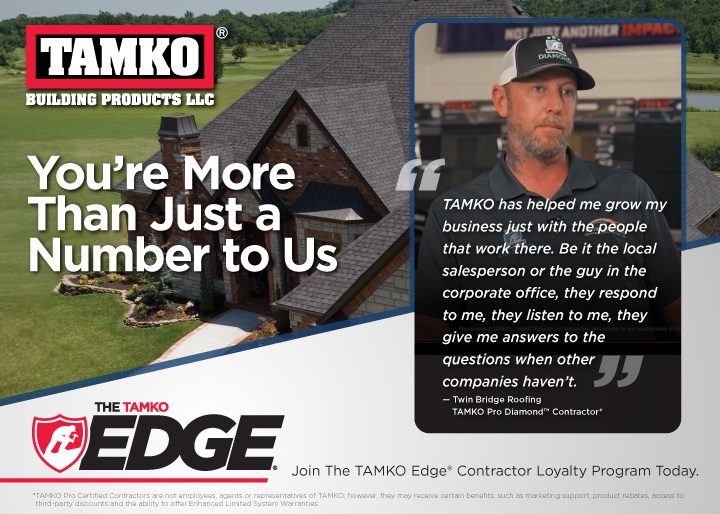



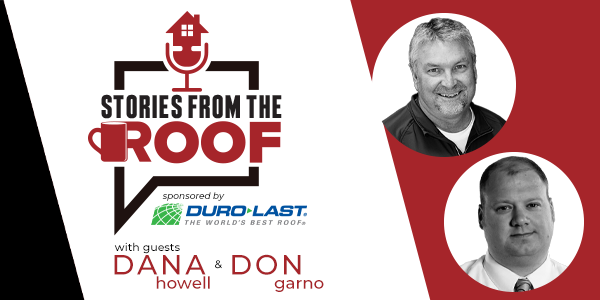
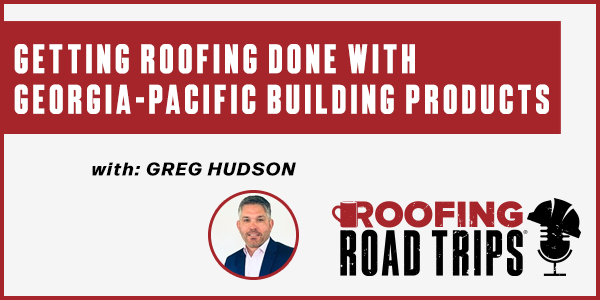
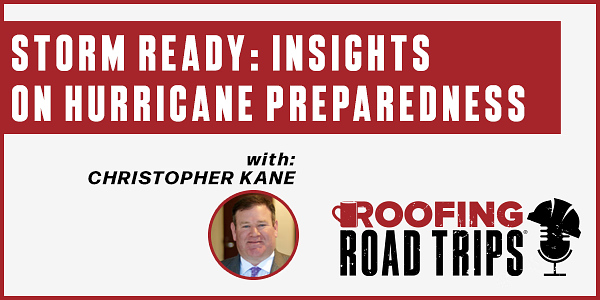
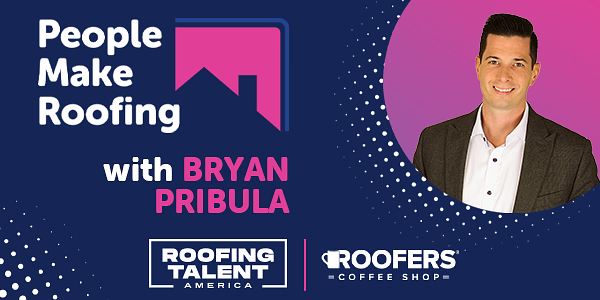


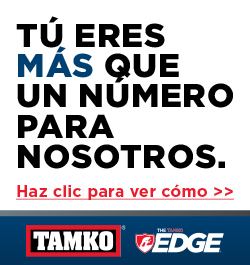

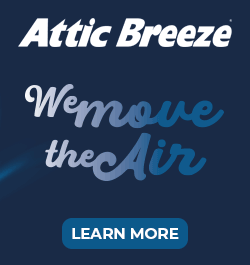
Comments
Leave a Reply
Have an account? Login to leave a comment!
Sign In